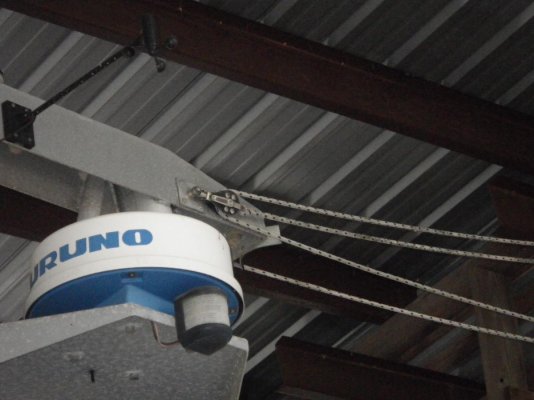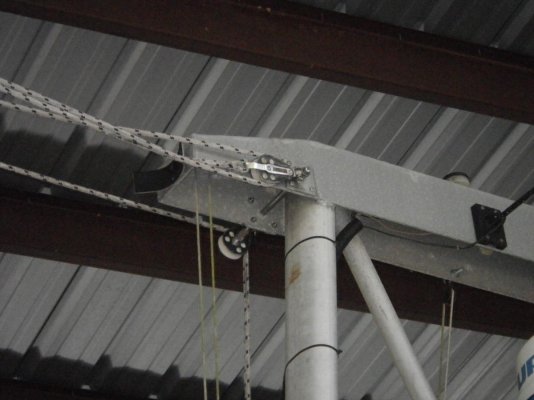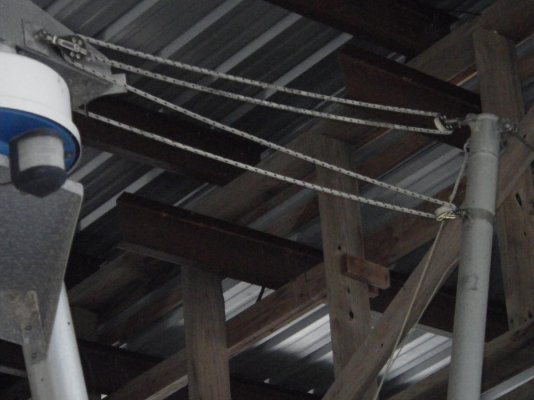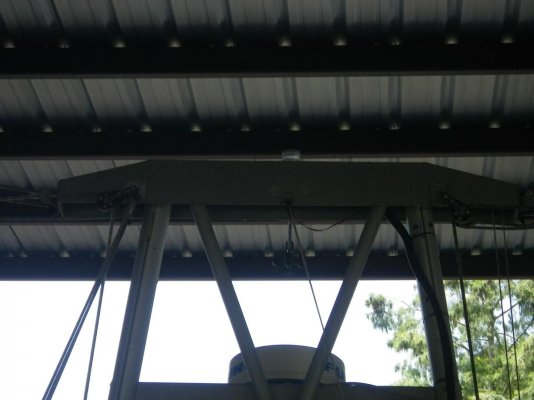Gulf Comanche
Guru
- Joined
- Dec 16, 2007
- Messages
- 1,045
- Location
- U.S.A.
- Vessel Name
- Old School
- Vessel Make
- 38' Trawler custom built by Hike Metal Products
I just replaced the old lines that control the paravanes. New line is 3/8” double braided polyester, roughly 75’ in length per pole. According to one strength chart I checked, the tensile strength of this line is 5,000 lbs. There are 5 pulleys that control one pole, thus 4 loops from the crane (?) to the near top and mid point of the pole. Does this translate to 20,000 lbs tensile strength?
If you look at the top right of the attached photo you can see the pulleys.
If you look at the top right of the attached photo you can see the pulleys.





